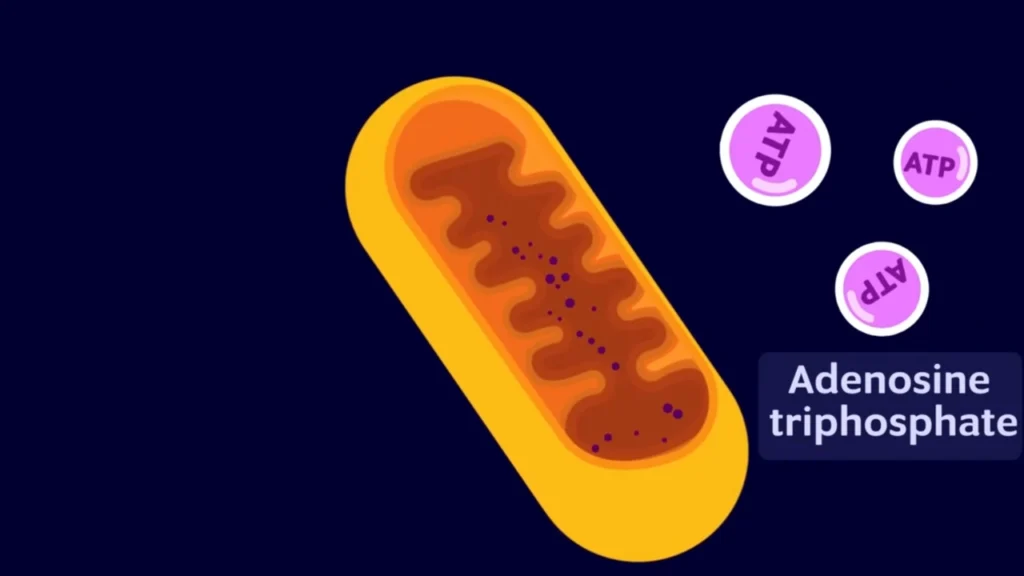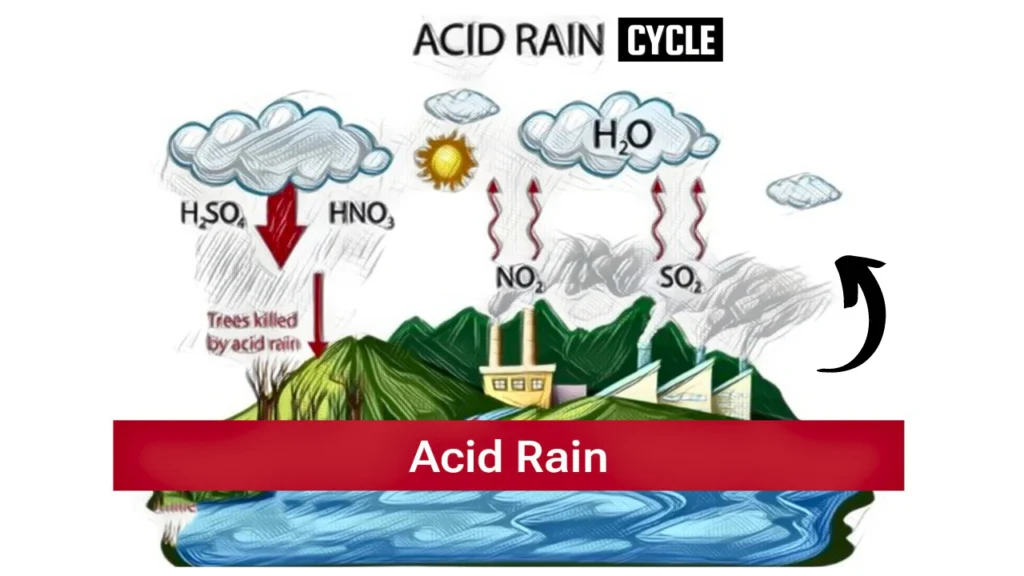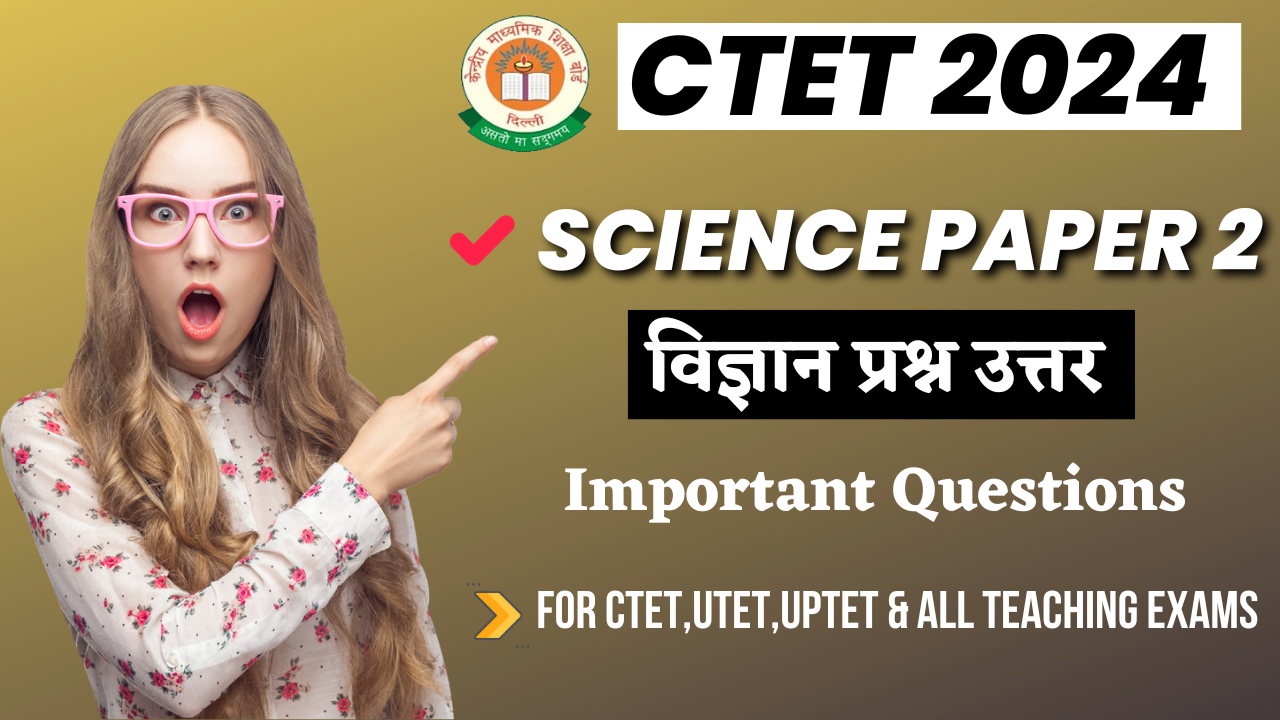Ctet Science Paper 2 Important MCQ : CTET की परीक्षा में उच्च प्राथमिक छात्रों के लिए विज्ञान विषय की तैयारी करने के लिए आज हम आपके लिए CTET Science Paper 2 में पूछे जाने वाले विज्ञान के महत्वपूर्ण प्रश्नों को लेकर आए हैं । विज्ञान वर्ग के छात्रों के लिए गणित और विज्ञान से 60 प्रश्न पूछे जाते हैं, जिन भी अभ्यर्थियों ने CTET जुलाई परीक्षा के लिए आवेदन किया है, वह अभ्यर्थी विज्ञान (Ctet Science paper 2 )विषय की अपनी तैयारी इन प्रश्नों के साथ कर सकता है इन प्रश्नों के माध्यम से विज्ञान विषय में पूछे जाने वाले प्रश्नों को हल करने में आपको सहायता मिलेगी ।
विज्ञान के यह प्रश्न विभिन्न शिक्षक पात्रता परीक्षा में पूछे जाते हैं जैसे की-CTET, UTET, UPTET,MPTET, HTET,आदि में प्रश्न पूछे जाते हैं । विज्ञान के इन प्रश्नों की सहायता से आप आगामी सीटेट परीक्षा की तैयारी को आसान बना सकते हैं । इस CTET Science Paper 2 MCQ in hindi with answers पोस्ट को पूरा पढ़ें ।
Ctet Science Paper 2 MCQ | Ctet Science Syllabus | Ctet Science Paper 2 Notes
Your Queries:
- Ctet science paper 2
- Ctet Science Paper 2 MCQ
- Ctet Paper 2 Science MCQ
- Ctet Science Paper 2 Questions
Q1. Which of the following processes is responsible for the removal of carbon dioxide from the atmosphere?
A. Photosynthesis
B. Respiration
C. Combustion
D. Decomposition
Answer: A. Photosynthesis
Q1. निम्नलिखित में से कौन सी प्रक्रिया वायुमंडल से कार्बन डाइऑक्साइड को हटाने के लिए जिम्मेदार है?
A. प्रकाश संश्लेषण
B श्वसन
C. दहन
D. अपघटन
उत्तर: A. प्रकाश संश्लेषण
Q2.In a food chain, which of the following organisms are considered primary consumers?
A. Plants
B. Herbivores
C. Carnivores
D. Decomposers
Answer: B. Herbivores
Explanation: Primary consumers are organisms that feed on primary producers (plants). Herbivores are animals that eat plants, making them primary consumers in the food chain. Examples include deer, rabbits, and caterpillars.
Q2.एक खाद्य श्रृंखला में, निम्नलिखित में से किस जीव को प्राथमिक उपभोक्ता माना जाता है?
A. पौधे
B शाकाहारी
C. मांसाहारी
D. डीकंपोजर
उत्तर: B शाकाहारी
स्पष्टीकरण: प्राथमिक उपभोक्ता वे जीव हैं जो प्राथमिक उत्पादकों (पौधों) पर भोजन करते हैं। शाकाहारी जानवर वे जानवर हैं जो पौधों को खाते हैं, जिससे वे खाद्य श्रृंखला में प्राथमिक उपभोक्ता बन जाते हैं। उदाहरणों में हिरण, खरगोश और कैटरपिलर शामिल हैं।
Q3. Which of the following elements is most essential for the formation of proteins in living organisms?
A. Carbon
B. Nitrogen
C. Oxygen
D. Hydrogen
Answer: B. Nitrogen
Q3. जीवित जीवों में प्रोटीन के निर्माण के लिए निम्नलिखित में से कौन सा तत्व सबसे आवश्यक है?
A. कार्बन
B नाइट्रोजन
C. ऑक्सीजन
D. हाइड्रोजन
उत्तर: B. नाइट्रोजन
Q4. Which of the following best describes the function of the mitochondria in eukaryotic cells?
A. Protein synthesis
B. Photosynthesis
C. Cellular respiration
D. Digestion of cellular waste
Answer: C. Cellular respiration
Explanation: Mitochondria are known as the “powerhouses” of the cell because they are the sites of cellular respiration. This process converts the chemical energy stored in glucose into ATP (adenosine triphosphate), which is used by cells to perform various functions. Cellular respiration involves the breakdown of glucose in the presence of oxygen to produce carbon dioxide, water, and ATP.
Q4. निम्नलिखित में से कौन यूकेरियोटिक कोशिकाओं में माइटोकॉन्ड्रिया के कार्य का सबसे अच्छा वर्णन करता है?
A. प्रोटीन संश्लेषण
B प्रकाश संश्लेषण
C. कोशिकीय श्वसन
D. सेलुलर अपशिष्ट का पाचन
उत्तर: C. कोशिकीय श्वसन
स्पष्टीकरण: माइटोकॉन्ड्रिया को कोशिका के “पावरहाउस” के रूप में जाना जाता है क्योंकि वे सेलुलर श्वसन के स्थल हैं। यह प्रक्रिया ग्लूकोज में संग्रहीत रासायनिक ऊर्जा को एटीपी (एडेनोसिन ट्राइफॉस्फेट) में परिवर्तित करती है, जिसका उपयोग कोशिकाओं द्वारा विभिन्न कार्यों को करने के लिए किया जाता है। सेलुलर श्वसन में कार्बन डाइऑक्साइड, पानी और एटीपी का उत्पादन करने के लिए ऑक्सीजन की उपस्थिति में ग्लूकोज का टूटना शामिल है।

Q5. Which of the following best describes the role of decomposers in an ecosystem?
A. They produce food through photosynthesis.
B. They break down dead organisms and recycle nutrients.
C. They are primary consumers that feed on plants.
D. They are predators that hunt other animals.
Answer: B. They break down dead organisms and recycle nutrients.
Explanation: Decomposers, such as bacteria and fungi, play a crucial role in ecosystems by breaking down dead plants, animals, and organic matter, thereby recycling nutrients back into the soil.
Q5. निम्नलिखित में से कौन एक पारिस्थितिकी तंत्र में डीकंपोजर की भूमिका का सबसे अच्छा वर्णन करता है?
A. वे प्रकाश संश्लेषण के माध्यम से भोजन का उत्पादन करते हैं।
B. वे मृत जीवों को तोड़ते हैं और पोषक तत्वों का पुनर्चक्रण करते हैं।
C. वे प्राथमिक उपभोक्ता हैं जो पौधों पर भोजन करते हैं।
D. वे शिकारी हैं जो अन्य जानवरों का शिकार करते हैं।
उत्तर: B. वे मृत जीवों को तोड़ते हैं और पोषक तत्वों का पुनर्चक्रण करते हैं।
स्पष्टीकरण: बैक्टीरिया और कवक जैसे डीकंपोजर, मृत पौधों, जानवरों और कार्बनिक पदार्थों को तोड़कर पारिस्थितिक तंत्र में महत्वपूर्ण भूमिका निभाते हैं, जिससे पोषक तत्व वापस मिट्टी में वापस आ जाते हैं।
यह भी पढ़ें – Hindi Pedagogy MCQ for CTET 2024 | हिंदी के लिए महत्वपूर्ण प्रश्न उत्तर
Q6. Which of the following properties is common to both metals and non-metals?
A. High electrical conductivity
B. High melting point
C. Ability to form covalent bonds
D. Malleability
Answer: C. Ability to form covalent bonds
Q6. निम्नलिखित में से कौन सा गुण धातु और अधातु दोनों में समान है?
A. उच्च विद्युत चालकता
B. उच्च गलनांक
C. सहसंयोजक बंधन बनाने की क्षमता
D. लचीलापन
उत्तर: C. सहसंयोजक बंधन बनाने की क्षमता
Q7. Which of the following laws is described by the statement “For every action, there is an equal and opposite reaction”?
A. Newton’s First Law of Motion
B. Newton’s Second Law of Motion
C. Newton’s Third Law of Motion
D. Law of Universal Gravitation
Answer: C. Newton’s Third Law of Motion
Explanation: Newton’s Third Law of Motion states that for every action, there is an equal and opposite reaction.
Q7. निम्नलिखित में से किस नियम का वर्णन “प्रत्येक क्रिया के लिए, एक समान और विपरीत प्रतिक्रिया होती है” कथन द्वारा किया गया है?
A. न्यूटन का गति का पहला नियम
B. न्यूटन का गति का दूसरा नियम
C. न्यूटन का गति का तीसरा नियम
D. सार्वभौमिक गुरुत्वाकर्षण का नियम
उत्तर: C. न्यूटन का गति का तीसरा नियम
व्याख्या: न्यूटन के गति के तीसरे नियम में कहा गया है कि प्रत्येक क्रिया के लिए एक समान और विपरीत प्रतिक्रिया होती है।
Q8. What is the main purpose of chlorophyll in plants?
A. To absorb light energy for photosynthesis
B. To protect the plant from herbivores
C. To transport water and nutrients
D. To provide structural support
Answer: A. To absorb light energy for photosynthesis
Explanation: Chlorophyll is a green pigment found in the chloroplasts of plant cells. Its main purpose is to absorb light energy, primarily from the sun, and convert it into chemical energy during the process of photosynthesis.
Q8. पौधों में क्लोरोफिल का मुख्य उद्देश्य क्या है?
A. प्रकाश संश्लेषण के लिए प्रकाश ऊर्जा को अवशोषित करना
B. पौधे को शाकाहारी जीवों से बचाने के लिए
C. पानी और पोषक तत्वों के परिवहन के लिए
D. संरचनात्मक सहायता प्रदान करना
उत्तर: A. प्रकाश संश्लेषण के लिए प्रकाश ऊर्जा को अवशोषित करना
व्याख्या: क्लोरोफिल एक हरा रंगद्रव्य है जो पौधों की कोशिकाओं के क्लोरोप्लास्ट में पाया जाता है। इसका मुख्य उद्देश्य मुख्य रूप से सूर्य से प्रकाश ऊर्जा को अवशोषित करना और प्रकाश संश्लेषण की प्रक्रिया के दौरान इसे रासायनिक ऊर्जा में परिवर्तित करना है।
Q9. Which type of reproduction results in offspring that are genetically identical to the parent?
A. Sexual reproduction
B. Asexual reproduction
C. Pollination
D. Cross-fertilization
Answer: B. Asexual reproduction
Explanation: Asexual reproduction involves a single parent and results in offspring that are genetically identical to the parent. Examples of asexual reproduction include binary fission in bacteria, budding in yeast, and vegetative propagation in plants.
Q9. किस प्रकार के प्रजनन के परिणामस्वरूप संतानें आनुवंशिक रूप से माता-पिता के समान होती हैं?
A.असाहवासिक प्रजनन
B. अलैंगिक प्रजनन
C. परागण
D. क्रॉस-निषेचन
उत्तर: B. अलैंगिक प्रजनन
स्पष्टीकरण: अलैंगिक प्रजनन में एकल माता-पिता शामिल होते हैं और परिणामस्वरूप संतानें आनुवंशिक रूप से माता-पिता के समान होती हैं। अलैंगिक प्रजनन के उदाहरणों में बैक्टीरिया में द्विआधारी विखंडन, यीस्ट में नवोदित होना और पौधों में वानस्पतिक प्रसार शामिल हैं।
Q10. What is the main cause of acid rain?
A. Emission of carbon dioxide from vehicles
B. Emission of sulfur dioxide and nitrogen oxides from industrial processes
C. Emission of methane from agricultural activities
D. Emission of ozone from air conditioners
Answer: B. Emission of sulfur dioxide and nitrogen oxides from industrial processes

Q10. अम्लीय वर्षा का मुख्य कारण क्या है?
A. वाहनों से कार्बन डाइऑक्साइड का उत्सर्जन
B. औद्योगिक प्रक्रियाओं से सल्फर डाइऑक्साइड और नाइट्रोजन ऑक्साइड का उत्सर्जन
C. कृषि गतिविधियों से मीथेन का उत्सर्जन
D. एयर कंडीशनर से ओजोन का उत्सर्जन
उत्तर: B. औद्योगिक प्रक्रियाओं से सल्फर डाइऑक्साइड और नाइट्रोजन ऑक्साइड का उत्सर्जन
Q11. In the human body, which organ is primarily responsible for detoxifying chemicals and metabolizing drugs?
A. Heart
B. Kidneys
C. Liver
D. Lungs
Answer: C. Liver
Explanation: The liver is the primary organ responsible for detoxifying chemicals, metabolizing drugs, and processing various metabolic waste products. It plays a crucial role in converting harmful substances into less toxic forms that can be excreted from the body.
प्रश्न11. मानव शरीर में, कौन सा अंग मुख्य रूप से रसायनों को विषहरण करने और दवाओं के चयापचय के लिए जिम्मेदार है?
A. हृदय
B. गुर्दे
C. जिगर
D. फेफड़े
उत्तर: C. लिवर
स्पष्टीकरण: यकृत विषहरण रसायनों, दवाओं के चयापचय और विभिन्न चयापचय अपशिष्ट उत्पादों के प्रसंस्करण के लिए जिम्मेदार प्राथमिक अंग है। यह हानिकारक पदार्थों को कम विषाक्त रूपों में परिवर्तित करने में महत्वपूर्ण भूमिका निभाता है जिन्हें शरीर से बाहर निकाला जा सकता है।
Q12. Which of the following best explains why a metal spoon feels colder than a wooden spoon at room temperature?
A. Metals have a higher density than wood.
B. Metals conduct heat better than wood.
C. Metals reflect light better than wood.
D. Metals have a higher specific heat capacity than wood.
Answer: B. Metals conduct heat better than wood.
Explanation: Metals are good conductors of heat, meaning they transfer heat more quickly than wood. When you touch a metal spoon, it quickly conducts heat away from your hand, making it feel colder compared to a wooden spoon, which is a poor conductor of heat.
प्रश्न12. निम्नलिखित में से कौन सबसे अच्छा बताता है कि कमरे के तापमान पर धातु का चम्मच लकड़ी के चम्मच की तुलना में अधिक ठंडा क्यों लगता है?
A. धातुओं का घनत्व लकड़ी की तुलना में अधिक होता है।
B. धातुएँ लकड़ी की तुलना में ऊष्मा का बेहतर संचालन करती हैं।
C. धातुएँ लकड़ी की तुलना में प्रकाश को बेहतर प्रतिबिंबित करती हैं।
D. धातुओं की विशिष्ट ताप क्षमता लकड़ी की तुलना में अधिक होती है।
उत्तर: B. धातुएँ लकड़ी की तुलना में ऊष्मा का बेहतर संचालन करती हैं।
व्याख्या: धातुएँ ऊष्मा की अच्छी संवाहक होती हैं, अर्थात वे लकड़ी की तुलना में अधिक तेज़ी से ऊष्मा स्थानांतरित करती हैं। जब आप किसी धातु के चम्मच को छूते हैं, तो यह तेजी से गर्मी को आपके हाथ से दूर ले जाता है, जिससे यह लकड़ी के चम्मच की तुलना में ठंडा महसूस होता है, जो गर्मी का खराब संवाहक होता है।
Q13. Which part of the cell is known as the ‘control center’?
A. Nucleus
B. Mitochondrion
C. Ribosome
D. Golgi apparatus
Answer: A. Nucleus
Explanation: The nucleus is often referred to as the ‘control center’ of the cell because it contains the cell’s genetic material (DNA) and regulates gene expression and cell activities. It controls cell growth, metabolism, and reproduction.
Q13. कोशिका के किस भाग को ‘नियंत्रण केंद्र’ के नाम से जाना जाता है?
A. नाभिक
B माइटोकॉन्ड्रियन
C. राइबोसोम
D. गोल्गी उपकरण
उत्तर: A. न्यूक्लियस
स्पष्टीकरण: नाभिक को अक्सर कोशिका के ‘नियंत्रण केंद्र’ के रूप में जाना जाता है क्योंकि इसमें कोशिका की आनुवंशिक सामग्री (डीएनए) होती है और जीन अभिव्यक्ति और कोशिका गतिविधियों को नियंत्रित करती है। यह कोशिका वृद्धि, चयापचय और प्रजनन को नियंत्रित करता है।
Q14. The process by which a liquid changes into a gas at a temperature below its boiling point is called:
A. Evaporation
B. Condensation
C. Sublimation
D. Freezing
Answer: A. Evaporation
Explanation: Evaporation is the process by which a liquid changes into a gas at a temperature below its boiling point. It typically occurs at the surface of the liquid, where molecules with sufficient energy escape into the air.
प्रश्न14. वह प्रक्रिया जिसके द्वारा कोई द्रव अपने क्वथनांक से नीचे के तापमान पर गैस में परिवर्तित हो जाता है, कहलाती है:
A. वाष्पीकरण
B संक्षेपण
C. ऊर्ध्वपातन
D. जमना
उत्तर: A. वाष्पीकरण
स्पष्टीकरण: वाष्पीकरण वह प्रक्रिया है जिसके द्वारा एक तरल अपने क्वथनांक से नीचे के तापमान पर गैस में बदल जाता है। यह आमतौर पर तरल की सतह पर होता है, जहां पर्याप्त ऊर्जा वाले अणु हवा में बच जाते हैं।
Q15. Which of the following vitamins is essential for blood clotting?
A. Vitamin A
B. Vitamin B12
C. Vitamin C
D. Vitamin K
Answer: D. Vitamin K
Explanation: Vitamin K is essential for the process of blood clotting. It helps in the synthesis of proteins required for blood coagulation and prevents excessive bleeding. Without sufficient vitamin K, the body cannot effectively form blood clots.
प्रश्न 15. निम्नलिखित में से कौन सा विटामिन रक्त का थक्का जमने के लिए आवश्यक है?
A. विटामिन ए
B. विटामिन बी12
C. विटामिन सी
D. विटामिन के
उत्तर: D. विटामिन K
व्याख्या: रक्त का थक्का जमने की प्रक्रिया के लिए विटामिन K आवश्यक है। यह रक्त के थक्के जमने के लिए आवश्यक प्रोटीन के संश्लेषण में मदद करता है और अत्यधिक रक्तस्राव को रोकता है। पर्याप्त विटामिन K के बिना, शरीर प्रभावी ढंग से रक्त के थक्के नहीं बना सकता है।
Read More :-
Inclusive Education in Hindi for CTET| समावेशी शिक्षा क्या है ?
